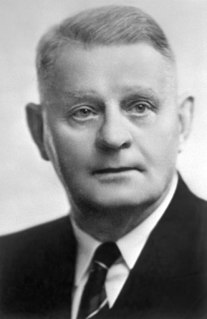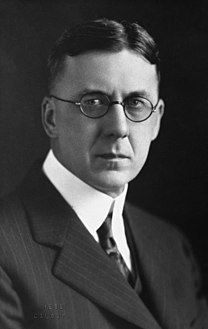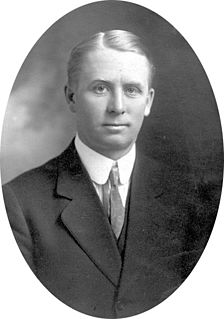| |||||||||||||||||||||||||||||||||||||||||||||||||||||||||||||||||||||||||||||
60 seats in the Legislative Assembly of Alberta 31 seats were needed for a majority | |||||||||||||||||||||||||||||||||||||||||||||||||||||||||||||||||||||||||||||
|---|---|---|---|---|---|---|---|---|---|---|---|---|---|---|---|---|---|---|---|---|---|---|---|---|---|---|---|---|---|---|---|---|---|---|---|---|---|---|---|---|---|---|---|---|---|---|---|---|---|---|---|---|---|---|---|---|---|---|---|---|---|---|---|---|---|---|---|---|---|---|---|---|---|---|---|---|---|
| Turnout | 67 percent [1] | ||||||||||||||||||||||||||||||||||||||||||||||||||||||||||||||||||||||||||||
| |||||||||||||||||||||||||||||||||||||||||||||||||||||||||||||||||||||||||||||
| |||||||||||||||||||||||||||||||||||||||||||||||||||||||||||||||||||||||||||||
The Alberta general election of 1926 was the sixth general election for the Province of Alberta, Canada. It was held on June 28, 1926, to elect members of the Legislative Assembly of Alberta. The writs of election were issued on May 10, 1926, allowing an election period of 40 days.

Alberta is a western province of Canada. With an estimated population of 4,067,175 as of 2016 census, it is Canada's fourth most populous province and the most populous of Canada's three prairie provinces. Its area is about 660,000 square kilometres (250,000 sq mi). Alberta and its neighbour Saskatchewan were districts of the Northwest Territories until they were established as provinces on September 1, 1905. The premier has been Rachel Notley since May 2015.

Canada is a country in the northern part of North America. Its ten provinces and three territories extend from the Atlantic to the Pacific and northward into the Arctic Ocean, covering 9.98 million square kilometres, making it the world's second-largest country by total area. Canada's southern border with the United States is the world's longest bi-national land border. Its capital is Ottawa, and its three largest metropolitan areas are Toronto, Montreal, and Vancouver. As a whole, Canada is sparsely populated, the majority of its land area being dominated by forest and tundra. Consequently, its population is highly urbanized, with over 80 percent of its inhabitants concentrated in large and medium-sized cities, many near the southern border. Canada's climate varies widely across its vast area, ranging from arctic weather in the north, to hot summers in the southern regions, with four distinct seasons.

The Legislative Assembly of Alberta is one of two components of the Legislature of Alberta, the other being Elizabeth II, Queen of Canada, represented by the Lieutenant-Governor of Alberta. The Alberta legislature meets in the Alberta Legislature Building in the provincial capital, Edmonton. The Legislative Assembly consists of 87 members, elected first past the post from single-member electoral districts.
Contents
After Herbert Greenfield had resigned as United Farmers leader and premier, John E. Brownlee accepted the position and led the UFA to a second election victory, increasing the UFA's number of seats.

Herbert W. Greenfield was a Canadian politician who served as the fourth Premier of Alberta from 1921 until 1925. Born in Winchester, Hampshire, in England, he immigrated to Canada in his late twenties, settling first in Ontario and then in Alberta, where he farmed. He soon became involved in the United Farmers of Alberta (UFA), a farmers' lobby organization that was in the process of becoming a political party, and was elected as the organization's vice president. Greenfield did not run in the 1921 provincial election, the first provincial general election in which the UFA fielded candidates, but when the UFA won a majority in the Legislature in that election he was chosen by the UFA caucus to serve as Premier.

The United Farmers of Alberta (UFA) is an association of Alberta farmers that has served different roles in its 100-year history – as a lobby group, a successful political party, and as a farm-supply retail chain. As a political party, it formed the government of Alberta from 1921 to 1935.

John Edward Brownlee, was the fifth Premier of Alberta, Canada, serving from 1925 until 1934. Born in Port Ryerse, Ontario, he studied history and political science at the University of Toronto's Victoria College before moving west to Calgary to become a lawyer. His clients included the United Farmers of Alberta (UFA); through his connection with that lobby group, he was involved in founding the United Grain Growers (UGG).
1926 would mark the first general election that Single Transferable Vote would be used in Alberta. Calgary, Edmonton and Medicine Hat continued to be multi member districts, previously electing members in a plurality Block Vote, now electing members under STV-PR, through the Hare Proportional Representation system. The rural areas continued being single member districts, but now members were elected under Alternative Voting system under which voters cast single transferable votes (preferential voting).

Calgary was a provincial electoral district in Alberta, Canada that existed from 1905 to 1913 and was recreated from 1921 to 1959. The district returned from one to six members to the Legislative Assembly of Alberta. The district largely encompassed the boundaries of the City of Calgary, and was revised accordingly as the city grew.
The Edmonton provincial electoral district existed in two incarnations from 1905 - 1909 and again from 1921 - 1955, with the city broken up into multiple constituencies in the other time-periods. The district was created when Alberta became a province, to encompass residents of the city of Edmonton on the northside of the North Saskatchewan River For a time, it was one of three multi-member constituencies in the province's history, the others being Calgary and Medicine Hat.

Medicine Hat is an Albertan provincial electoral district, covering most of the city of Medicine Hat.
This dual system of balloting would last until 1959 (although Medicine Hat reverted to a single-member constituency before that).
Under STV in Edmonton, The UFA captured one seat in Edmonton where it had taken no seats in 1921. It also took four rural seats that had been captured by Liberal candidates in 1921 (Beaver River, Leduc, Sedgewick and Whitford), and one that had been won by an Independent in 1921 (Claresholm). The UFA also won the district of Empress formerly known as Redcliffe, which had been won by the UFA in 1921. The UFA lost their seat in Medicine Hat but gained a seat in the newly created next-door Cypress district, and lost its seat at St. Albert.
The Conservatives did better in this election than in the previous one, winning two seats each in Edmonton and Calgary.







